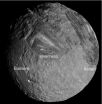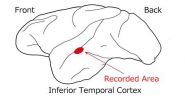(Press-News.org) University of Minnesota electrical engineering researchers have developed a unique nanoscale device that for the first time demonstrates mechanical transportation of light. The discovery could have major implications for creating faster and more efficient optical devices for computation and communication.
The research paper by University of Minnesota electrical and computer engineering assistant professor Mo Li and his graduate student Huan Li has been published online and will appear in the October issue of Nature Nanotechnology.
Researchers developed a novel nanoscale device that can capture, measure and transport fundamental particles of light, called photons. The tiny device is just .7 micrometers by 50 micrometer (about .00007 by .005 centimeters) and works almost like a seesaw. On each side of the "seesaw benches," researchers etched an array of holes, called photonic crystal cavities. These cavities capture photons that streamed from a nearby source.
Even though the particles of light have no mass, the captured photons were able to play seesaw because they generated optical force. Researchers compared the optical forces generated by the photons captured in the cavities on the two sides of the seesaw by observing how the seesaw moved up and down. In this way, the researchers weighed the photons. Their device is sensitive enough to measure the force generated by a single photon, which corresponds to about one-third of a thousand-trillionth of a pound or one-seventh of a thousand-trillionth of a kilogram.
Professor Li and his research team also used the seesaw to experimentally demonstrate for the first time the mechanical control of transporting light.
"When we filled the cavity on the left side with photons and leave the cavity on the right side empty, the force generated by the photons started to oscillate the seesaw. When the oscillation was strong enough, the photons can spill over along the beam from the filled cavity to the empty cavity during each cycle," Li said. "We call the phenomenon 'photon shuttling.'"
The stronger the oscillation, the more photons are shuttled to the other side. Currently the team has been able to transport approximately 1,000 photons in a cycle. For comparison, a 10W light bulb emits 1020 photons every second. The team's ultimate goal is to transport only one photon in a cycle so that the quantum physics of light can be revealed and harnessed.
"The ability to mechanically control photon movement as opposed to controlling them with expensive and cumbersome optoelectronic devices could represent a significant advance in technology," said Huan Li, the lead author of the paper.
The research could be used to develop an extremely sensitive micromechanical way to measure acceleration of a car or a runner, or could be used as part of a gyroscope for navigation, Li said.
In the future, the researchers plan to build sophisticated photon shuttles with more traps on either side of the seesaw device that could shuttle photons over greater distances and at faster speeds. They expect that such devices could play a role in developing microelectronic circuits that would use light instead of electrons to carry data, which would make them faster and consume less power than traditional integrated circuits.
INFORMATION:
The team's research was funded by the Air Force Office of Scientific Research.
The device was fabricated in the cleanroom at the Minnesota Nano Center at the University of Minnesota.
To read the full research paper entitled "Optomechanical photon shuttling between photonic cavities," visit the Nature Nanotechnology website.
Engineers show light can play seesaw at the nanoscale
Discovery is another step toward faster and more energy-efficient optical devices for computation and communication
2014-09-22
ELSE PRESS RELEASES FROM THIS DATE:
Graphene imperfections key to creating hypersensitive 'electronic nose'
2014-09-22
Researchers have discovered a way to create a highly sensitive chemical sensor based on the crystalline flaws in graphene sheets. The imperfections have unique electronic properties that the researchers were able to exploit to increase sensitivity to absorbed gas molecules by 300 times.
The study is available online in advance of print in Nature Communications.
Amin Salehi- Khojin, asst professor of mechanical and industrial engineering in the lab with Mohammad Asadi, graduate student and Bijandra Kumar, post doc where they are doing research in graphene sensors. Photo: ...
Gravitational waves according to Planck
2014-09-22
No one has ever directly observed gravitational waves, phenomena predicted by Einstein's theory of General Relativity, and such a discovery would have profound implications for the study of the Universe. Last March, however, the team behind the BICEP2 project made a ground-breaking announcement: the Antarctic observatory had detected a signal referable to gravitational waves. The study claimed to have excluded possible contaminants (other sources that could have generated the same signal) and that the observation was therefore to be considered genuine. But not everyone ...
Miranda: An icy moon deformed by convection
2014-09-22
Boulder, Colo., USA – Miranda, a small, icy moon of Uranus, is one of the most visually striking and enigmatic bodies in the solar system. Despite its relatively small size, Miranda appears to have experienced an episode of intense resurfacing that resulted in the formation of at least three remarkable and unique surface features -- polygonal-shaped regions called coronae.
These coronae are visible in Miranda's southern hemisphere, and each one is at least 200 km across. Arden corona, the largest, has ridges and troughs with up to 2 km of relief. Elsinore corona has ...
Neurons express 'gloss' using 3 perceptual parameters
2014-09-22
Japanese researchers showed monkeys a number of images representing various glosses and then they measured the responses of 39 neurons by using microelectrodes. They found that a specific population of neurons changed the intensities of the responses linearly according to either the contrast-of-highlight, sharpness-of-highlight, or brightness of the object. This shows that these 3 perceptual parameters are used as parameters when the brain recognizes a variety of glosses. They also found that different parameters are represented by different populations of neurons. This ...
A two-generation lens: Current state policies fail to support families with young children
2014-09-22
September 19, 2014 -- Recent two-generation approaches to reducing poverty that help children and their parents are receiving increasing attention from researchers, advocates, and foundations. By combining education and training for parents to enable them to move to jobs that offer a path out of poverty with high-quality early care and education for children, these programs aim to improve the life opportunities of both. However, according to a new report from the National Center for Children in Poverty (NCCP), State Policies through a Two-Generation Lens, while research ...
Good bowel cleansing is key for high-quality colonoscopy
2014-09-22
Bethesda, MD (Sept. 22, 2014) — The success of a colonoscopy is closely linked to good bowel preparation, with poor bowel prep often resulting in missed precancerous lesions, according to new consensus guidelines released by the U.S. Multi-Society Task force on Colorectal Cancer. Additionally, poor bowel cleansing can result in increased costs related to early repeat procedures. Up to 20 to 25 percent of all colonoscopies are reported to have an inadequate bowel preparation.
"When prescribing bowel preparation for their patients, health-care professionals need to be ...
Online ratings influence parents' choices of physicians for their children
2014-09-22
ANN ARBOR, Mich. – Almost three-quarters (74%) of parents are aware of online rating sites for physicians, and more than one-quarter (28%) have used those online ratings to choose a healthcare provider for their children, according to U-M research published today in Pediatrics.
Using the University of Michigan's C.S. Mott Children's Hospital National Poll on Children's Health, researchers surveyed 1,619 parents about how online ratings of physicians influenced their choices in seeking healthcare providers for their children.
They found that parents had a higher level ...
Hold on, tiger mom
2014-09-22
RIVERSIDE, Calif. — Less supportive and punitive parenting techniques used by some Chinese parents might lead to the development of low self-esteem and school adjustment difficulties in their children and leave them vulnerable to depression and problem behaviors, according to a paper recently published by a University of California, Riverside assistant professor and other researchers.
The study, believed to be the first that provides empirical support to this idea, refutes the idea that the traditional, strict "Chinese" upbringing, which gained widespread attention in ...
Obesity and stress pack a double hit for health
2014-09-22
If you're overweight, you may be at greater risk for stress-related diseases like type 2 diabetes, cardiovascular disease and cancer, according to a new study by Brandeis University.
It's long known that psychological stress can trigger biological responses similar to the effects of illness or injury, including inflammation. While normal inflammation is an important part of our body's healing response, runaway inflammation can contribute to chronic and life-threatening diseases.
In a recently published paper in Brain, Behavior and Immunity, Brandeis researchers observed ...
Environment plays bigger role than genetics in food allergic disease eosinophilic esophagitis
2014-09-22
Researchers have found that environment has a much stronger role than genetics in eosinophilic esophagitis (EoE), a severe, often painful food allergy that renders children unable to eat a wide variety of foods.
Eosinophils are normal cellular components of the blood, but when the body produces too many eosinophils they can cause a variety of eosinophilic disorders. These are disorders involving chronic inflammation and resulting tissue damage, often in the gastrointestinal system.
In an international collaboration involving multiple institutions, researchers at ...
LAST 30 PRESS RELEASES:
Two Hebrew University researchers win prestigious ERC consolidator grants
ERC grant helps to quantify the impact of anthropogenic air pollution particles on climate
Exercise might help improve mobility during aging
New online tool detects drug exposure directly from patient samples
Learn the surprising culprit limiting the abundance of Earth’s largest land animals
Study reveals new ways the brain regulates communication between neurons
Research reveals new hybrid state of matter where solids meet liquids
Researchers develop a new computational tool to understand how genetic interactions impact human traits
Elephants, giraffes and rhinos go where the salt is
Cancer loses its sense of time to avoid stress responses
The twisted nanotubes that tell a story
Flaring black hole whips up ultra-fast winds
Study explores the link between newspaper preference and attitudes towards autism
Artificial turf in the Nordic climate – a question of sustainability
The hidden toll of substance use disorder: annual cost of lost productivity to US economy nearly $93 billion
Among psychologists, AI use is up, but so are concerns
Recycling a pollutant to make ammonia production greener
Common institutional ownership linked to less aggressive business strategies in Chinese firms
Energy and regional factors drive carbon price volatility in China’s emissions trading markets
Researchers from NUS Medicine and the Institute of Mental Health detect early brain changes linked to future psychosis development
Cryopreserved vs liquid-stored platelets for the treatment of surgical bleeding
Cost-effectiveness of cryopreserved vs liquid-stored platelets for managing surgical bleeding
Adaptive Kalman filter boosts BDS-3 navigation accuracy in challenging environments
Home-based monitoring could transform care for patients receiving T-cell redirecting therapies
Listening to the 'whispers' of electrons and crystals: A quantum discovery
Report on academic exchange (colloquium) with Mapua University
Sport in middle childhood can breed respect for authority in adolescence
From novel therapies to first-in-human trials, City of Hope advances blood cancer care at the American Society of Hematology (ASH) annual conference
Research aims to strengthen the security of in-person voting machines
New study exposes hidden Alzheimer’s 'hot spots' in rural Maryland and what they reveal about America’s growing healthcare divide
[Press-News.org] Engineers show light can play seesaw at the nanoscaleDiscovery is another step toward faster and more energy-efficient optical devices for computation and communication



